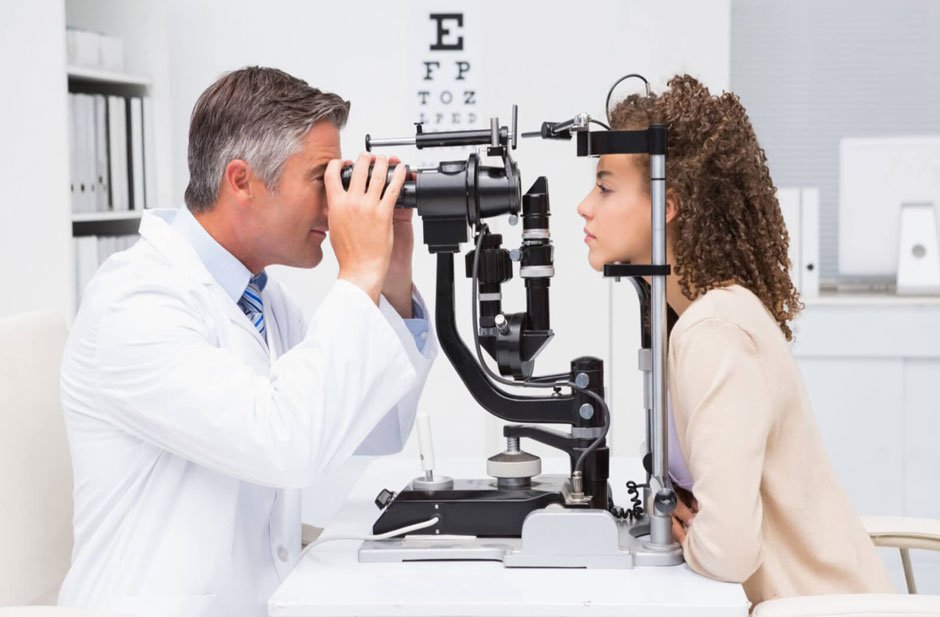Not all eye exams are built the same. Some are quick and routine. Others dig deeper into the case of your eyesight, though it’s more of a case-to-case basis. If a checkup always feels rushed, it might be time to ask for more.
Getting the most out of an eye exam is the right thing to do if there seems to be something the eye doctor wasn’t able to probe about. Nothing wrong with being proactive when it comes to eye health.
Don’t Let the Exam Stop at the Basics
Most basic checkups cover the usual vision test and general screening for eye pressure and disease. While helpful, this leaves out useful insights like how eyes respond to stress and whether habits might be adding to long-term strain.
Bringing up issues that don’t seem “urgent” is worth it. Dryness, fluctuating clarity, glare sensitivity, or screen fatigue all fall through the cracks if the exam stays surface level. Mentioning how eyes feel throughout the day gives the optometrist a starting point to run more relevant tests.
If vision shifts during work hours or driving becomes less comfortable, those details deserve attention. A full exam should respond to lifestyle just as much as numbers on a chart.
Know What to Ask For
Patients don’t need to walk in with a checklist, but knowing which services exist helps guide the appointment. Some of the most overlooked but valuable additions include:
- Meibomian gland imaging to assess dry eye symptoms beyond simple redness or itchiness
- A binocular vision test to check how well eyes work as a team. This is useful for students or desk workers.
- Retinal imaging for a detailed view of the back of the eye. These help catch early signs of disease
- Blue light evaluation to measure how screen time might be affecting sleep cycles or eye strain
- Visual field testing of headaches, pressure behind the eyes, or peripheral changes have been noticed
Be Honest About Habits That Impact Vision
Work and lifestyle have a huge influence on eye comfort. Hours spent behind a screen or shifting focus between near and far distances can leave eyes under constant pressure. The more honest the conversation about these routines, the better the exam results.
People who work from home, use multiple monitors, or do lots of night driving have specific demands on their vision. Sharing these habits gives the optometrist go beyond their usual questions.
Screens are a common culprit, but so are sleep patterns. To add up are stress levels and inconsistent lighting. If there’s a particular activity that leaves the eyes feeling worse, don’t hold back. Many visual issues show up in real-life moments before they show up on paper.
Keep Records From Past Exams Handy
It helps to bring up any changes or recurring patterns, even if they seem small. The trouble with glare, dry patches at specific times of the year, or the need to blink more often to focus—these are clues that go beyond a chart test.
If there’s a record of past prescriptions or previous eye pressure readings, it’s even better. Small changes over time become more useful when they’re connected to a timeline. That’s how eye health is truly monitored rather than guessed.
Your Clinic Might Be Open to More Than You Think
The right clinic sets the tone for deeper exams. An optometrist in East Cobb, for example, might offer tiered exam options that let patients request specific tests without needing a full referral. Smaller practices often build in time for conversation, while larger ones may have advanced imaging tools already built into appointments.
Don’t assume what’s offered. Ask directly whether a deeper look at eye strain, dryness, or screen use can be built into the appointment. It’s more common than most people realize, and it usually doesn’t require extra visits or referrals.
A Little Curiosity Makes a Big Difference
Asking for more than the basic exam doesn’t make the appointment harder. It just makes it more useful. A good optometrist is there to catch what can’t always be seen at first glance. The more they know, the more they can fine-tune their care to match what eyes actually go through each day.
Vision care works best when both sides come to the table. One brings the tools. The other brings the full story.






Leave a Reply